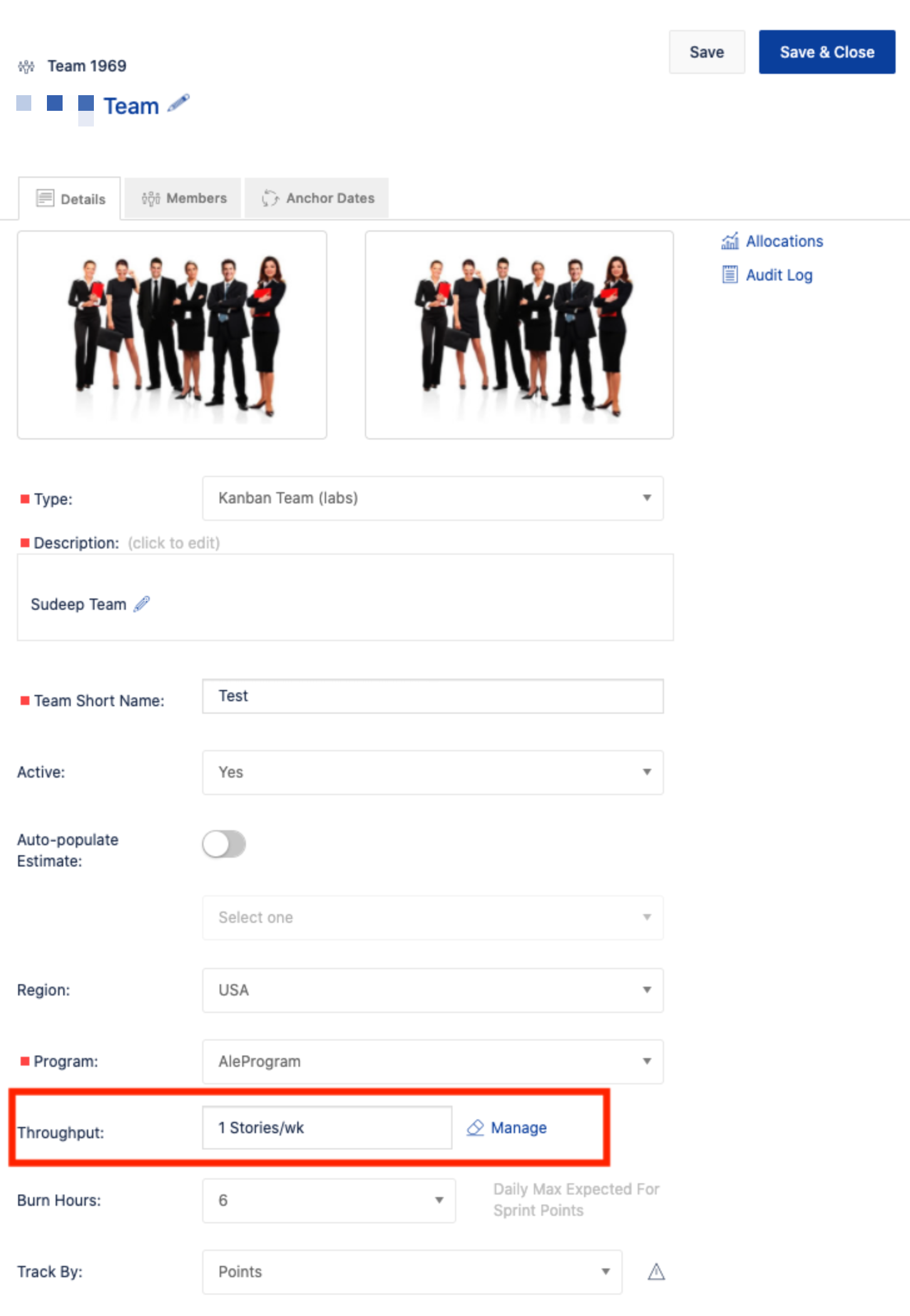How Throughput is calculated for Kanban Teams Jira Align
Summary
This article discusses:
- How Throughput is calculated in Jira Align
- How the Target Completion date for stories are calculated in Program Board in Jira Align
Environment
Jira Align
Solution
The Target Completion date is a calculated field in Jira Align and the calculation behind it is a little bit complex. This document will consolidate all the information around the Target Completion date for Stories in Program Board.
The Target Completion Date field uses several pieces of information to estimate when a particular user story will be completed. Here's how it works:
Sprint Assignment: The first variable is the sprint that the story is assigned to. This is a key determinant of when the story is expected to be completed.
Story Points: The story points assigned to the story are also taken into account. This gives an estimate of the effort needed to complete the story.
Team Velocity: The velocity of the team working on the story plays a significant role in determining when the story will be finished. Velocity is calculated based on the average number of story points completed by the team in previous sprints. Team Velocity calculates the Throughput in Jira Align but the automatic calculation can be overwritten/edited into the Team configuration as per the screenshot below (go to Team > teams: select your team):
Throughput represents the average number of stories a team moves into the Accepted state each week. Throughput is used to group items in the backlog into weekly buckets on the Team Room page, plot out estimated deliveries on the Roadmap, and more.
When creating or editing a Kanban team, you can choose automatic calculation — based on the most recent 5 weeks of performance — or override the calculation and enter a value manually.
Override is useful for mature teams that known their current output, but are new to Jira Align
Calculation method:
The Target Completion Date is generated by adding the time it is estimated to take to complete the story to the start date of the sprint it has been assigned to. This calculation takes into account the team's velocity and the story points.
For example, if a story is assigned to a sprint that starts on July 1st, has 5 story points, and the team's velocity is 10 story points per sprint, the estimated completion date would be calculated as follows:
Since the team's velocity is 10 story points per sprint, they could finish 5 story points in half of the sprint's duration. If we assume a standard sprint duration of 2 weeks, the story would be completed in 1 week.
Therefore, if the sprint starts on July 1st, the Target Completion Date would be calculated as July 1st + 1 week, which is July 8th.
Additional notes over the Calculation Method:
Remember, the Target Completion Date is an estimate and the actual completion date can vary based on many factors such as changes in team velocity, addition or removal of story points, or other factors affecting the team's work.
Also, it's important to note that if a story is not assigned to a sprint, the Target Completion Date field will not be calculated.
If a story is moved to a future sprint after it has started, then the Target Completion Date will be recalculated based on the new sprint's start date and the remaining story points.
Statuses and Priority of Stories:
In Jira Align, status of the story and its priority do influence various project aspects but they do not directly impact the calculation of the Target Completion Date.
Status: The status of the story (e.g., To Do, In Progress, Done) reflects the current state of work but does not affect the Target Completion Date. However, once a story reaches the "Completed" status, the Target Completion Date is no longer relevant as the actual completion date becomes the key date of interest. If a story's status changes (for example, from 'In Progress' to 'Done'), this doesn't alter the Target Completion Date, but it would affect the actual completion date.
Priority: The priority of a story can affect the order in which it's worked on within a sprint, but it doesn't directly alter the Target Completion Date. High priority stories are likely to be addressed earlier in a sprint, but the system doesn't adjust the Target Completion Date based on priority.
In summary, while status and priority are important for managing and organizing work, they do not directly factor into the calculation of the Target Completion Date in Jira Align. That calculation is primarily driven by the assigned sprint, team's velocity, and the story points assigned to the story.
